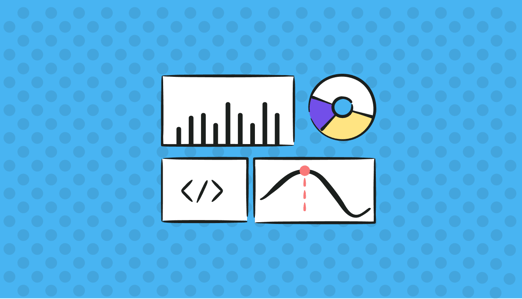
As your business scales, it’s important that your AWS environment scales too. One of the tools that support massive scale is DynamoDB, a powerful AWS-native, fully managed, key-value, NoSQL database. 100,000 AWS customers use DynamoDB every day, and the service handles 1 trillion requests per day.
It was designed to provide flexibility and scalability for high-performing applications with changing workloads. However, it has no strategy to optimize pricing. This means that DynamoDB costs can quickly rise and outrun your project budget. Let’s discuss best practices for preventing costly DynamoDB prices.How DynamoDB Charges: Read/Write Capacity Modes
A pillar of the AWS Well-Architected Framework is cost optimization. How do you achieve that in DynamoDB? At the most basic level, you need to understand that DynamoDB charges for three main actions: reading, writing, and storing data in your DynamoDB tables. DynamoDB is included in the AWS free tier up to certain thresholds for these actions, including:
- Data storage: 25 GB for the DynamoDB standard table class
- Stream read requests: 2.5 million
- Data transfer: 100 GB data out to the internet (aggregated across all AWS services and regions)
Enabling optional features adds additional costs, and, at the core of the pricing structure, is the concept of capacity modes. Choosing a read/write capacity mode for your tables is critical to cost optimization in DynamoDB. This impacts how you are charged for read and write throughput, as well as how you manage capacity. You may adjust billing outcomes depending on whether you select on-demand vs. provisioned capacity modes; let’s examine this further.
On-Demand Capacity Mode
If you prefer the pay-as-you-use approach, an on-demand capacity mode may be a good fit for your AWS environment. This means that DynamoDB scales as your workload changes, and you are charged for the requests you make. As per AWS: “You pay per request for the data reads and writes your application performs on your tables. You do not need to specify how much read and write throughput you expect your application to perform, as DynamoDB instantly accommodates your workloads.”
The on-demand capacity mode makes sense for applications with a small number of requests, unpredictable traffic, or unknown workloads. It also works for teams that want to simplify operations while keeping the budget as a priority.
For more information on pricing for on-demand capacity, use the Pricing Calculator.
Provisioned Capacity Mode
If you have predictable application traffic and accurate forecasting, the provisioned capacity mode may be a better fit than on-demand. Provisioned capacity mode means that you proactively specify the number of read/write operations your application requires per second. Once provisioned, capacity levels have the ability to automatically scale to meet traffic spikes. You are billed hourly for the use of operational capacity units.
Many organizations find it cost-effective to utilize the provisioned capacity mode because you can control instances by the hour, develop schedules to accommodate expected increases in demand or plan for gradual increases.
For more information on pricing for provisioned capacity, use the Pricing Calculator.
Optimize and Control DynamoDB Costs
While DynamoDB has many benefits, it also introduces many challenges related to cost management. How can you ensure that database costs align with your budget? To gain control over your DynamoDB costs, we recommend following these five best practices:
- Choose cost-effective AWS Regions, like us-east-1, us-east-2, and us-west-2.
- Utilize Reserved Instances.
- Use queries instead of scans to increase efficiency.
- Use smaller record sizes to keep storage costs low.
- Employ self-service cloud observability platforms.
DynamoDB Cost Observability
The experience gained through managing a traditional SQL database does not always easily translate when moving to DynamoDB. The enterprise features of DynamoDB make the change worth it, but cost optimization can be complex. How will a configuration change impact the price of your unit cost? Are there any unused tables? To use DynamoDB effectively and without breaking the budget, your FinOps team must have access to such information.
This brings us to item 5 of the best practices. A FinOps approach to cost control enhances visibility over the cost implications of day-to-day technical decisions. Effective FinOps means that teams must be consuming meaningful data, and it is your cloud observability platform that drives this strategy.
Using a cloud cost observability platform like Finout will show you, at a granular level, where your investment is spent on AWS, what features you’re utilizing, and how your decisions will impact your cost optimization efforts. Contact Finout today to learn how our platform can inform your DynamoDB spending.







